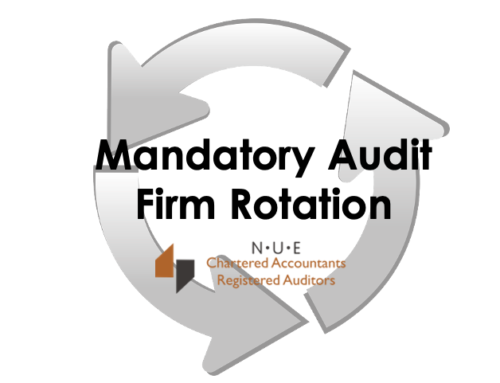Payroll management is a critical aspect of running a successful small business. As a business owner, it is essential to ensure that your employees are paid accurately and on time. Failure to manage payroll properly can lead to a host of problems, including employee dissatisfaction, compliance issues, and legal liabilities.
In this article, we will discuss some of the best practices for payroll management that small businesses can adopt to ensure smooth and efficient operations.
Automate your payroll processes
One of the best ways to streamline your payroll management is to automate your processes. With the advent of technology, there are several payroll software solutions available that can automate your payroll tasks, such as calculating and processing payroll, generating pay stubs, and handling tax filings.
By automating your payroll processes, you can save time and reduce errors that may occur due to manual entry. Additionally, you can also ensure compliance with state and federal regulations, which can be complex and time-consuming to manage manually.
Keep accurate records
Keeping accurate records is crucial for payroll management. As a small business owner, you must maintain detailed records of all payroll-related transactions, including employee information, pay rates, hours worked, tax withholdings, and deductions.
Accurate record-keeping can help you identify errors or discrepancies quickly, allowing you to rectify them before they escalate into larger problems. Additionally, keeping detailed records can also help you comply with legal requirements, such as tax filings, audits, and wage and hour regulations.
Ensure compliance with wage and hour laws
Small businesses must comply with wage and hour laws to avoid legal penalties and disputes. These laws regulate various aspects of payroll management, including minimum wage, overtime pay, meal and rest breaks, and record-keeping requirements.
To ensure compliance with wage and hour laws, small businesses must keep up-to-date with changes in legislation and regulations. Additionally, you must have processes in place to track employee hours, calculate overtime pay, and provide meal and rest breaks where required.
Provide employee benefits
Providing employee benefits is an effective way to attract and retain top talent. However, managing employee benefits can be complex, especially for small businesses with limited resources.
To manage employee benefits effectively, small businesses must choose the right benefits plan and provider, educate employees on their benefits, and track and manage benefits enrolment and contributions. By providing employee benefits, you can boost employee morale and loyalty, leading to higher levels of engagement and productivity.
Use direct deposit for employee payments
Direct deposit is a convenient and secure way to pay employees. Instead of issuing paper checks, direct deposit allows you to transfer employee pay directly to their bank accounts. This saves time and money compared to issuing paper checks, which can be costly and time-consuming to print, sign, and distribute.
Additionally, direct deposit is more secure than paper checks, which can be lost or stolen. By using direct deposit, you can also reduce the risk of fraud, as all transactions are electronic and traceable.
Outsource payroll management
Outsourcing payroll management is an effective way for small businesses to save time and resources. Outsourcing allows you to delegate payroll management to a third-party provider, who can handle all aspects of payroll, including tax filings, employee payments, and compliance with regulations.
By outsourcing payroll management, you can free up time and resources that you can redirect to other areas of your business. Additionally, outsourcing can help you avoid costly errors and penalties that can result from non-compliance with regulations.
Monitor payroll expenses
Monitoring payroll expenses is critical for small businesses to ensure that they are managing their finances effectively. By monitoring payroll expenses, you can identify areas where you can reduce costs, such as overtime pay or employee benefits.
Additionally, monitoring payroll expenses can help you identify patterns or trends that can help you make better financial decisions based on your business needs. For example, if you notice that your payroll expenses are higher during certain months, you can plan and budget accordingly to avoid cash flow problems.
Train your payroll staff
If you have an in-house payroll team, it is essential to provide them with regular training to ensure that they are up-to-date with the latest payroll laws and regulations. Training can help your payroll staff improve their skills and knowledge, which can lead to more accurate and efficient payroll management.
Additionally, training can help your payroll staff identify and prevent errors or discrepancies before they escalate into larger problems. Investing in training can also lead to higher employee satisfaction and loyalty, as employees feel valued and empowered when they are provided with opportunities for growth and development.
Conduct regular payroll audits
Regular payroll audits can help small businesses identify and rectify errors or discrepancies in their payroll processes. Audits can help you ensure compliance with regulations, identify areas for improvement, and avoid costly penalties.
To conduct a payroll audit, you can review your payroll records, and check for accuracy in employee information, pay rates, tax withholdings, and deductions. Additionally, you can compare your payroll records to financial statements to ensure that payroll expenses are accurately recorded.
Communicate with employees
Effective communication with employees is critical for successful payroll management. You must keep your employees informed about changes in their pay rates, tax withholdings, and benefits to avoid confusion or misunderstandings.
Additionally, you should provide employees with easy access to their pay stubs and other payroll-related information, such as vacation balances and sick leave accruals. By providing transparent and accessible payroll information, you can improve employee satisfaction and trust, leading to a more positive workplace culture.
In conclusion, payroll management is a critical aspect of running a successful small business. By adopting best practices such as automating your payroll processes, keeping accurate records, ensuring compliance with wage and hour laws, providing employee benefits, using direct deposit, outsourcing payroll management, monitoring payroll expenses, training your payroll staff, conducting regular payroll audits, and communicating with employees, you can ensure that your payroll operations run smoothly and efficiently. By managing payroll effectively, you can avoid costly errors, comply with regulations, and foster a positive workplace culture that supports employee satisfaction and loyalty.




